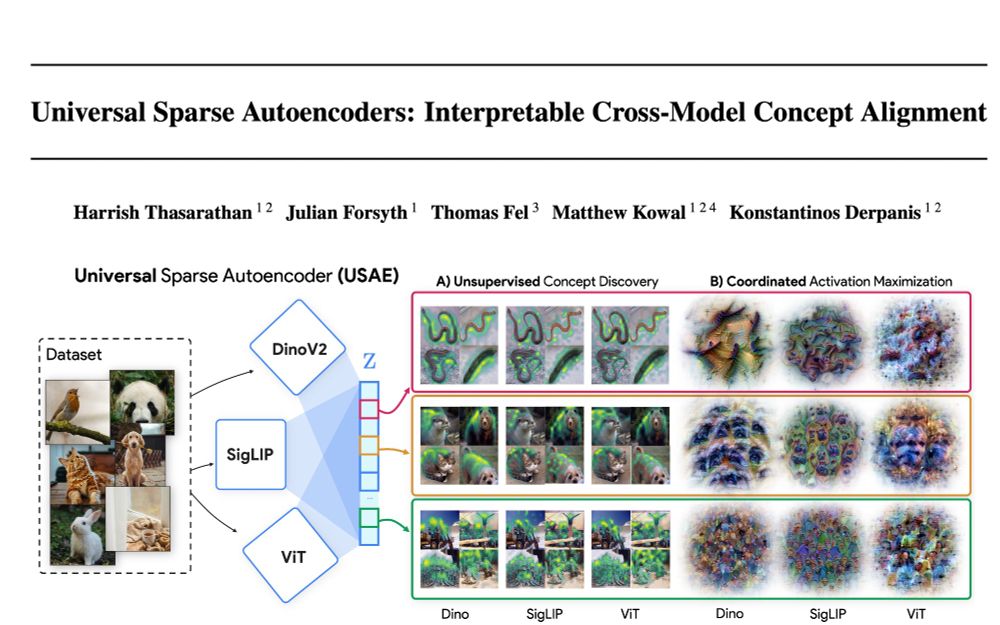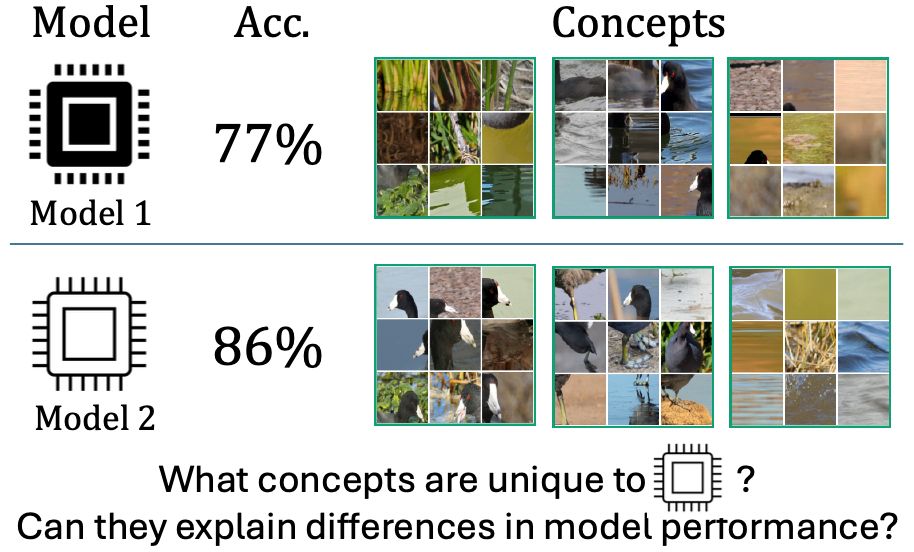
Come see our poster at 4pm on Tuesday in East Exhibition hall A-B, E-1208!
Come see our poster at 4pm on Tuesday in East Exhibition hall A-B, E-1208!
My first major conference paper with my wonderful collaborators and friends @matthewkowal.bsky.social @thomasfel.bsky.social
@Julian_Forsyth
@csprofkgd.bsky.social
Working with y'all is the best 🥹
Preprint ⬇️!!
arxiv.org/abs/2502.03714
(1/9)

My first major conference paper with my wonderful collaborators and friends @matthewkowal.bsky.social @thomasfel.bsky.social
@Julian_Forsyth
@csprofkgd.bsky.social
Working with y'all is the best 🥹
Preprint ⬇️!!
HUGE shoutout to Harry (1st PhD paper, in 1st year), Julian (1st ever, done as an undergrad), Thomas and Matt!
@hthasarathan.bsky.social @thomasfel.bsky.social @matthewkowal.bsky.social
arxiv.org/abs/2502.03714
(1/9)

HUGE shoutout to Harry (1st PhD paper, in 1st year), Julian (1st ever, done as an undergrad), Thomas and Matt!
@hthasarathan.bsky.social @thomasfel.bsky.social @matthewkowal.bsky.social
Representational Similarity via Interpretable Visual Concepts
arxiv.org/abs/2503.15699
We all know the ViT-Large performs better than the Resnet-50, but what visual concepts drive this difference? Our new ICLR 2025 paper addresses this question! nkondapa.github.io/rsvc-page/

Representational Similarity via Interpretable Visual Concepts
arxiv.org/abs/2503.15699
arxiv.org/abs/2502.03714
(1/9)

arxiv.org/abs/2502.03714
(1/9)

arxiv.org/abs/2502.03714
(1/9)

